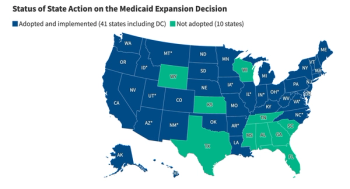
ICER’s Leader: How to Assess the Value of Cell and Gene Therapies
Payers grapple with expensive treatment payment options.
Science is producing a growing number of gene and cell therapies to treat spinal muscular atrophy, leukemia, and other conditions, but payers and providers don’t have the information they need to determine what they should pay for these treatments. That’s according to Steven Pearson, MD, founder and president of Boston-based I
These are either single or short-term therapies that can deliver clinical benefits for the rest of a patient’s life. That’s a departure from the historical norm where patients take a drug on a daily basis.
If a health insurer is paying for these new gene and cell therapies just once, it’s going to be a steep price, Pearson tells Managed Healthcare Executive.
The challenge payers are facing is they’re asked to pay a significant cost during the year the patient receives treatment, but there’s uncertainty around these treatments.
The biggest question payers are wrestling with is this, he says: “How can we pay so much if [we’re unsure] the cure will last or what if it wears off in a few years?”
Thus, there’s a natural tension between providers and payers, where providers are driven to want to bring these treatments into clinical use, while payers-especially smaller insurers-are experiencing “shock and awe” by the high prices these treatments demand, says Pearson, who will speak at the
The value ICER brings to the discussion is providing clarity around where treatments work and where there’s uncertainty.
Take, for example, ICER’s determination that Bannockburn, Ill.-based AveXis’ Zolgensma (onasemnogene abeparvovec-xioi), which treats spinal muscular atrophy, is cost-effective at $2 million.
Related:
But just because one gene therapy is worth $2 million, that doesn’t mean every gene therapy will be worth that price tag, says Pearson. “The payer community was very worried…such as with orphan drugs, with a going price of $300,000, that every orphan drug was going to be priced at $300,000.”
It’s not easy for payers to figure out how to smooth out the payments for expensive treatments. Pearson acknowledges that, each year, payers have to tell companies that their employees’ premiums will increase 10% the next year.
With Medicaid, in particular, the challenge of managing costs is particularly acute. State Medicaid programs “can’t just roll over the high cost incurred without getting more in taxes,” he points out.
Medications are different than surgeries or other medical procedures where you can assign a price and add in a small profit. “Drugs are ‘a different animal,’” adds Pearson. “Drug makers have a monopoly. That means patients, doctors, and hospitals can’t walk away from the table, despite their limited tools to negotiate pricing.”
ICER’s role is to measure the clinical evidence to determine how much better the new treatment is compared to other options, according to Pearson.
The organization also scales the value assessment with health economists regarding how healthy the country and society are-and the county’s willingness to pay for additional health benefits-to determine the fair price for a drug.
During that process, ICER works with patients, clinical experts, manufacturers, and payers to ensure a drug’s cost offers “intrinsic value to patients” rather than creating a scenario where the healthcare ecosystem is investing in drugs that are “just a little better than current drugs,” he says.
Aine Cryts is a writer based in Boston.
Newsletter
Get the latest industry news, event updates, and more from Managed healthcare Executive.





















































